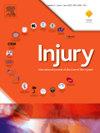Timing in orthopaedic surgery – Rethinking traditional myths with a critical perspective
IF 2.2
3区 医学
Q3 CRITICAL CARE MEDICINE
Injury-International Journal of the Care of the Injured
Pub Date : 2025-01-19
DOI:10.1016/j.injury.2025.112165
引用次数: 0
Abstract
Purpose
Standard operating procedures aim to achieve a standardized and assumedly high-quality therapy. However, in orthopaedic surgery, the aspect of temporal urgency is often based on surgical tradition and experience. At a time of evidence-based medicine, it is necessary to question these temporal guidelines. The following review will therefore address the most important temporal guidelines in orthopaedic surgery and discuss their practical relevance and potential need for optimization.
Methods
The systematic review features a literature review by database search in “PubMed” (https://pubmed.ncbi.nlm.nih.gov) for time to surgery in terms of (1) “proximal femoral fractures”, (2) “femoral neck fractures”, (3) “proximal humeral fractures”, (4) “ligament and tendon injuries”, (5) “spinal cord injuries”, (6) “open fractures” and (7) “fracture-related infections”. For every diagnosis, hypotheses on timing were set up and checked for evidence.
Results
There is solid clinical evidence supporting the initiation of treatment within 24 h for specific conditions like the surgical treatment of proximal femur fractures and prompt decompression of spinal cord injuries. However, for other scenarios such as the 6-hour rule for open fractures, joint-preserving femoral neck fractures, timing of ligament injuries, humeral head fractures and fracture-related infections there is currently no reliable evidence to guide prompt surgical treatment.
Conclusion
Based on the current data, resource-adapted surgical planning seems reasonable. Further research in these areas is necessary to determine the best timing of treatment and address existing doubts.
求助全文
约1分钟内获得全文
求助全文
来源期刊
CiteScore
4.00
自引率
8.00%
发文量
699
审稿时长
96 days
期刊介绍:
Injury was founded in 1969 and is an international journal dealing with all aspects of trauma care and accident surgery. Our primary aim is to facilitate the exchange of ideas, techniques and information among all members of the trauma team.

 求助内容:
求助内容: 应助结果提醒方式:
应助结果提醒方式:


